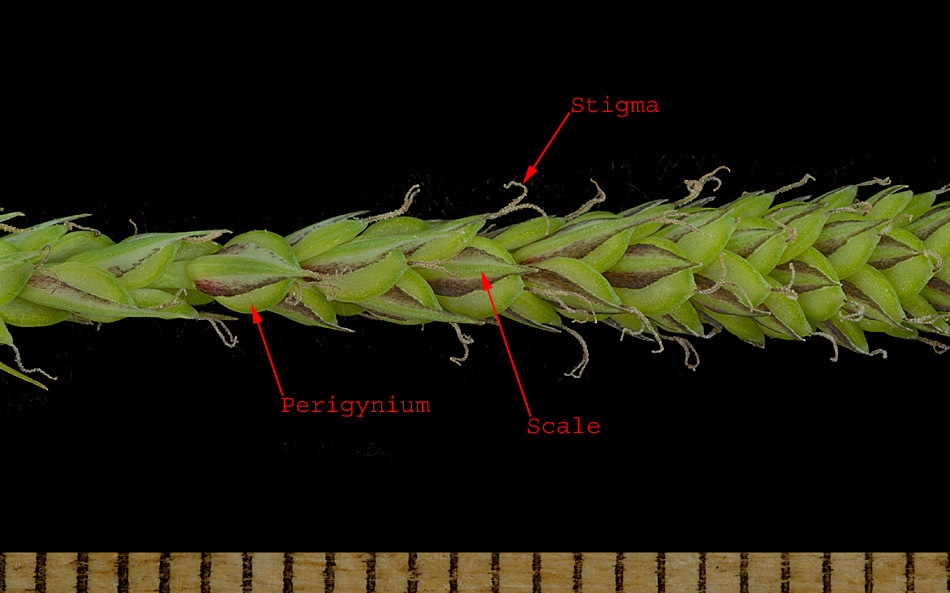 |
Aquatilis:
Answers to key questions in Sedges (Carex) of Saskatchewan, Fascicle 3,
Flora of Saskatchewan by Anna Leighton leading to this species. The
answers are in the order you would normally work through the key.
 |
Stigmas 2;
achenes lenticular. NOT [Stigmas 3; achenes three-sided,
occasionally terete, though their shape may be concealed by flattened
perigynia.] |
 |
Spikes 2
or more per culm, terminal and lateral; spike bracts present on lateral
spikes; lowest spike bracts usually evident, often conspicuous, even in
compact heads composed of densely bunched and indistinguishable spikes
(except in C. maritima, C. chordorrhiza and C.
microptera). NOT [Spikes 1 per culm, terminal; spike bracts
absent] |
 |
Individual
spikes distinguishable in an open inflorescence (densely bunched in C.
bicolor); spikes in any one inflorescence either markedly different
in appearance (with terminal spike staminate and lateral spikes
pistillate), or subtly different in appearance (with terminal spike
gynecandrous and lateral spikes pistillate), sessile or stalked.
NOT [Individual spikes distinguishable in an open inflorescence, or
indistinguishable in a compact head; spikes in any one inflorescence
alike in appearance due to their similar composition (i.e. all are
gynecandrous, androgynous, pistillate or staminate), sessile.] |
 |
Perigynia
not filled with spongy tissue at base. NOT [Spongy tissue visibly
filling bottom one-third to one-half of the perigynium with achene
positioned above it; perigynia less than 4 mm long. Section Stellulatae
(C. echinata, C. interior, C. sterilis)] |
 |
Beak
absent or a short tube to about 0.2 mm long and lacking teeth; style
deciduous from achene and if present at maturity breaks off readily when
manipulated; widely distributed or rare species. NOT [Beak 0.2-0.5 mm
long, bidentate; style base continuous with achene and persisting as a
prong; rare species of far north.] |
 |
Terminal
spike(s) staminate (may have occasional pistillate flowers at tip or
base); perigynium surface shiny or dull but not powdery, +/- flattened
in cross-section; beak a short tube 0.1-0.2 mm long. Section Phacocystis
(C. aquatilis, C. bigelowii, C. lenticularis).
NOT [Terminal spike staminate or gynecandrous; perigynium surface
appearing powdery due to a coating of minute papillae, (becoming smooth
at maturity in C. aurea), inflated except in C. bicolor,
beakless. Section Bicolores (C. aurea, C. bicolor,
C. garberi).] |
 |
Culms 4-12
dm tall or rarely shorter; leaves 2-8 mm wide; terminal
predominately-staminate spikes 2-4; perigynia usually obovate, rhizome
2-5 mm wide. NOT [Culms rarely taller than 4 dm; leaves 2-3 (4) mm
wide; terminal predominately-staminate spikes 1-2; perigynia elliptic or
ovate; rhizome absent or 2-3 mm wide.] |
|

